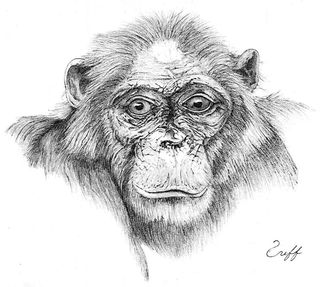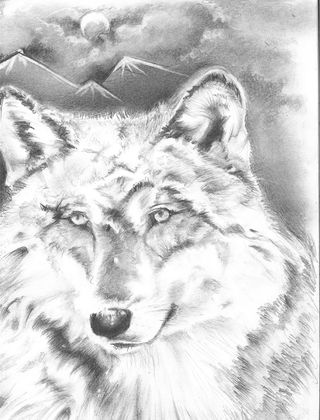
As Prisoners Learn of Animals' Compassion, They Connect (Op-Ed)

Marc Bekoff, emeritus professor at the University of Colorado, Boulder, is one of the world's pioneering cognitive ethologists, a Guggenheim Fellow, and co-founder with Jane Goodall of Ethologists for the Ethical Treatment of Animals. Bekoff's latest book is Why Dogs Hump and Bees Get Depressed (New World Library, 2013). This Op-Ed is adapted from one that appeared in Bekoff's column Animal Emotions in Psychology Today. He contributed this article to Live Science's Expert Voices: Op-Ed & Insights.
For 14 years, I've been teaching animal behavior and conservation biology at the Boulder, Colo., county jail as part of the Jane Goodall Institute's Roots & Shoots Program. The course is one of the most popular in the jail — students have to earn the right to enroll, and they work hard to get in it.
While there's student turnover, my fellow teachers and I are all pleasantly surprised at how science connects the inmates to various aspects of nature, and that many find it easier to connect with animals than with people. Animals don't judge them, and many of the inmates had lived with dogs, cats and other companions who were their best friends. They trust and empathize with animals in ways they don't with humans.
Nonetheless, people, including those in prison, often have a distorted view of how animals treat one another. At one of the first meetings, someone was talking out of turn as I was setting up the curriculum. One of the guys yelled, "Hey, shut up, you're acting like an ass. This guy's here to help us." I responded, "You've just paid him a complement," explaining that animals could be kind and empathic. While there's competition and aggression in nature, there's also a lot of cooperation , empathy and reciprocity. I explained that these behaviors are examples of "wild justice," and this idea made my students rethink what it means to be an animal. They've had enough of nature, red in tooth and claw, and many lament, "Look where that 'I'm behaving like an animal' excuse got me."

Topics we actively discuss include general aspects of animal behavior, the evolution of social behavior, evolution and creationism, biology and religion, sustainability, extinction, animal protection and environmental ethics, eugenics, environmental enrichment, balance in nature, complex webs of nature, cultural views of animals, and where people are in the grand scheme of things — anthropocentric influences on animals and the environment. Our exchanges rival those that I've had at university classes.
Many of the students see the class as a way to build community with animals and with people. My students yearn to build healthy relationships . I use examples of the social behavior of group-living animals such as wolves as a model for developing and maintaining long-term friendships among individuals who must work together not only for their own good, but also for the good of the group.

From time to time I ask the inmates what they get from the class. Here are some responses:
Sign up for the Live Science daily newsletter now
Get the world’s most fascinating discoveries delivered straight to your inbox.
The course is healing.
- I've learned a lot about understanding and appreciating animals as individuals
- The class balances scientific rigor with social consciousness
- The class gives us a sense of connection to webs of life
- What I do counts. I now have a vision for the future
- The class models healthy, pro-social ways of living and working in the world
- The class makes me feel better about myself
Science opens the door to understanding, trust, cooperation, community and hope. There's a large untapped population of individuals to whom science means a lot, but they haven't had the exposure needed to further their education.
I continue to get as much out of the class as the students, and it's made me a better teacher. For the students, science and humane education have helped them connect with values that they otherwise wouldn't have.
I've been told that because of the class, some of the students' kids are more likely to go into science. I know some students have gone back to school while others have made contributions in time and money to conservation organizations. Some have gone on to work for humane societies. One student went on to receive a master's degree in nature writing. It's clear that science inspires my students, and gives them hope.
Bekoff's most recent Op-Ed was "Why is Another Giraffe in Denmark Facing Possible Euthanasia?" This article was primarily adapted from the post "Animals and Inmates: Science Behind Bars" in Psychology Today. The views expressed are those of the author and do not necessarily reflect the views of the publisher. This version of the article was originally published on Live Science.
Most Popular



